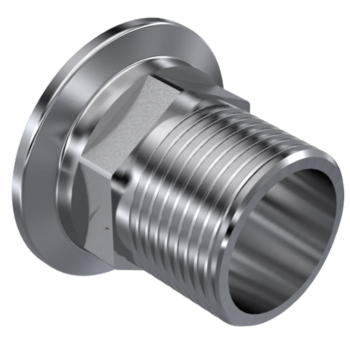Forged Flanges Suppliers
MSS SP, ASME B16.5, B16.47 Standards
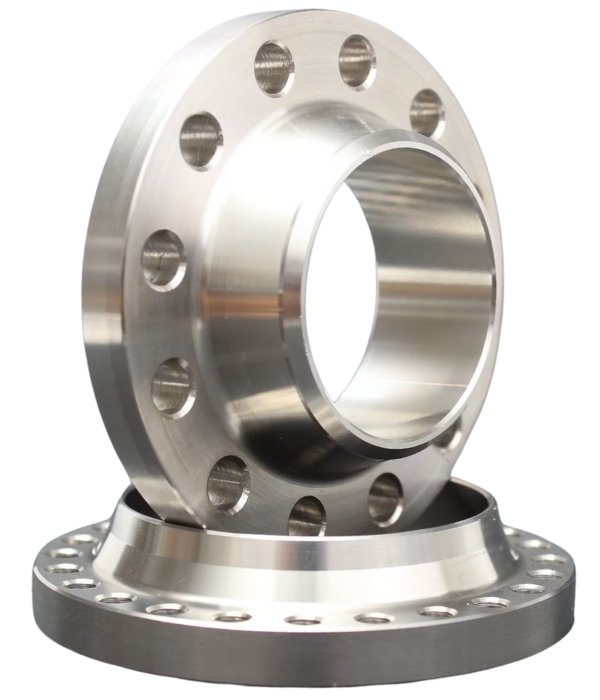
ASME B16.5 Forged Flanges: Dimensions | Specifications | Material Grade | Standards | About Forged Flange | All Product Types
Forged flanges are high-strength piping components widely used in industries that demand leak-proof and secure connections under high pressure and temperature conditions. These flanges are manufactured by hot forging solid steel and then precision-machining them to achieve accurate dimensions and surface finish. At Nutech, we manufacture and export forged flanges that comply with international standards including MSS SP, ASME B16.5, and ASME B16.47, making them suitable for critical applications across global industries.
Our forged flanges are available in various types such as weld neck, blind, slip-on, socket weld, lap joint, and threaded designs. These flanges are engineered for high mechanical strength and superior pressure retention, making them ideal for pipelines in oil & gas, power generation, petrochemical plants, shipbuilding, and water treatment systems. Each flange is heat treated and tested to ensure dimensional accuracy, structural integrity, and corrosion resistance.
We supply forged flanges in a wide range of materials including carbon steel, stainless steel, alloy steel, duplex and super duplex stainless steels, as well as high nickel alloys such as Inconel, Monel, Hastelloy, and Alloy 20. Our production capability also includes titanium, copper nickel, aluminium bronze, and 254 SMO, allowing us to meet the diverse requirements of global customers.
Nutech forged flanges are manufactured in compliance with pressure ratings ranging from 150# to 2500#, and are offered with raised face (RF), flat face (FF), and ring type joint (RTJ) facing options. We maintain strict tolerances and quality standards throughout the manufacturing process, including non-destructive testing (NDT), hydro testing, and PMI where required by project specifications.
As a global supplier of forged flanges, Nutech has established strong export relationships across regions including the Middle East, Southeast Asia, Europe, and Africa. Our commitment to timely delivery, third-party inspection options, and customized packaging solutions makes us a reliable partner for EPC contractors, fabricators, and industrial buyers worldwide.
Forged Flanges Manufacturer as per ASME B16.5, B16.47, MSS SP Standards – Class 150 to 2500, Size ½ to 60 inch in Stainless Steel, Carbon Steel, and High Nickel Alloys.
For complete technical details, including dimensions, pressure rating classes, weight charts, sizes, tolerances, and material specifications of our ANSI B16.5 Forged Flanges, please download the full Catalog PDF below.
Exporting High-Performance Forged Flanges for Oil & Gas, Petrochemical, Power & Marine Projects in the Middle East, Europe, Southeast Asia & Africa
Technical Specifications of Forged Flanges
| Specification | Details |
|---|---|
| Type | Weld Neck (WN), Slip-On (SO), Blind (BL), Socket Weld (SW), Threaded (TH), Lap Joint (LJ), Ring Type Joint (RTJ), Long Weld Neck (LWN), Reducing Flanges |
| Design Standard | ASME B16.5, ASME B16.47 Series A & B, MSS-SP-44, API 605, BS 4504, EN 1092-1, DIN Series, ISO 7005 |
| Size Range | ½″ NB to 60″ NB (DN15 to DN1500) |
| Pressure Ratings | Class 150, 300, 600, 900, 1500, 2500 (PN6 to PN400) |
| Face Type | Raised Face (RF), Flat Face (FF), Ring Type Joint (RTJ), Tongue & Groove (T&G), Male-Female (M&F) |
| Flange Thickness | As per ASME / EN / DIN dimensional and pressure class specifications |
| Function | Used to connect pipes, valves, pumps, and other equipment; suitable for high-pressure and high-temperature systems |
| Surface Finish | Stock Finish (3.2–6.3 μm), Smooth Face, Spiral Serrated, Concentric Serrated |
| Gasket Compatibility | Spiral Wound, Ring-Type Joint, Metal Jacketed, Full Face, Raised Face Gaskets |
| Coating / Protection | Transparent Varnish, Black Paint, Anti-Rust Oil, Hot-Dip Galvanized (on request) |
| Testing & Inspection | Hydro Test, PMI, UT / MPI / Radiography (as applicable), Dimensional & Visual Inspection, Third-Party Witnessing |
| Certification | EN 10204 Type 3.1 / 3.2, IBR Approval, ISO 9001, PED 2014/68/EU, NACE MR0175 / ISO 15156, ISO 9001 |
| Application Industries | Oil & Gas, Petrochemical, Refinery, Power Generation, Water Treatment, Shipbuilding, Offshore Platforms, Fire Protection, Marine, LNG & Cryogenic Piping |
| Origin | Made in India (by Nutech Overseas) |
| Export Network | USA, Europe, and Middle East |
Complete Material Grade Chart - Class 150 Forged Flange
| Material Category | Forged Flange Grades |
|---|---|
| Stainless Steel Forged Flange | ASTM A182 F304 / F304L / F304H, F316 / F316L / F316Ti, F310, F309S, F317 / F317L, F321 / F321H, F347 / F347H, F904L, ASTM A351 CF3 / CF3M / CF8 / CF8M / CF8C, DIN 1.4301, 1.4306, 1.4307, 1.4311, 1.4401, 1.4404, 1.4408, 1.4409, 1.4541, 1.4571, 1.4550, 1.4435, 1.4539 |
| Duplex Steel Forged Flange | ASTM A182 F51 / F52 / F53 / F54 / F55 / F57 / F59 / F60 / F61, UNS S31803 / S32205 |
| Super Duplex Steel Forged Flange | ASTM A182 F53 / F55 / F57 / F59 / F60 / F61, UNS S32750 / S32760 |
| Carbon Steel Forged Flange | ASTM A105 / A105N, ASTM A350 LF2, ASTM A694 F52 / F56 / F60 / F65 / F70 / F80, ASTM A216 WCB, DIN 1.0460 / 1.0402 / 1.0619, Die Steel, Mild Steel |
| Alloy Steel Forged Flange | ASTM A182 F5 / F9 / F11 / F12 / F22 / F91, AISI 4130 / 4140 |
| Nickel Alloy Forged Flange | Nickel 200 / 201, ASTM B564 |
| Monel Forged Flange | Monel 400 (UNS N04400), Monel K500 (UNS N05500), ASTM B564 |
| Inconel Forged Flange | Inconel 600 / 601 / 625 / 690 / 718 / 783 / X750, ASTM B564 |
| Incoloy Forged Flange | Incoloy 800 / 800H / 800HT (UNS N08800), Incoloy 825 (UNS N08825), Incoloy 925, ASTM B564 |
| Hastelloy Forged Flange | Hastelloy C276 (UNS N10276), C22 (UNS N06022), C4, C2000, B2, B3, X, ASTM B564 |
| Alloy 20 Forged Flange | Alloy 20 / 20Cb-3, Carpenter® 20, ASTM B462 |
| 254 SMO Forged Flange | SMO 254 / 6Mo, UNS S31254, DIN 1.4547, ASTM A182 |
| Copper Nickel Forged Flange | Copper Nickel 90/10 (C70600), 70/30 (C71500), UNS C71640, ASTM B61 / B62 / B151 / B152 |
| Copper Forged Flange | TP1, TP2, T1, T2, C10100–C12300, C14200–C17200, C21000–C71520, including C10930, C11000, C11400, C12000, C12200, C26000, C28000, C33000, C44300, C70600, etc. |
| Brass Forged Flange | Grades 3602, 2604, H59, H62, etc. |
| Aluminium Forged Flange | Aluminium Grades 5052, 6061, 6063, 2017, 7075, etc. |
| Titanium Forged Flange | ASTM B381 Gr.1 / Gr.2 / Gr.4 / Gr.5 / Gr.7, UNS R50250 / R50400 / R50550 / R50700 / R52400 / R53400 / R56320 / R56400 |
| Other Special Grades | Al6XN, Tin Bronze, Aluminium Bronze, Lead Bronze, Nimonic 75 / 80A / 90 |
International Flange Standards We Manufacture & Supply
The primary difference lies in their manufacturing process, mechanical properties, and performance in high-stress applications.
Forged Flanges:
- Manufactured by heating and compressing solid steel billets under high pressure.
- Produces a refined grain structure aligned with the shape of the flange, improving structural integrity.
- Offers higher strength, better ductility, and superior fatigue resistance.
- Less prone to internal defects such as porosity, cracks, or voids.
- Ideal for critical piping systems involving high pressure, temperature, or corrosive environments.
Cast Flanges:
- Produced by pouring molten metal into molds and allowing it to cool and solidify.
- May develop shrinkage cavities, porosity, or non-uniform grain structure during cooling.
- Lower tensile strength and generally less reliable for critical or high-pressure applications.
- Often used in low-pressure or non-critical systems where cost is a priority.
Choosing the right pressure class (also known as flange rating) is essential to ensure safety, system compatibility, and compliance with international standards.
Here’s how to select the right pressure class for forged flanges:
Understand the Operating Conditions
- Pressure and temperature are the key deciding factors.
- Higher temperature generally reduces pressure-handling capability, so consult pressure-temperature rating charts of standards like ASME B16.5.
- Example: A Class 300 flange may handle 740 psi at 100°F, but only 570 psi at 400°F.
Refer to International Standards
- Most forged flanges follow ASME, EN, or DIN standards.
- Common pressure classes include 150, 300, 600, 900, 1500, and 2500 in ASME; PN6 to PN400 in European standards.
- Always check the flange standard and face type when selecting class.
Material Compatibility
- Pressure class varies by material grade. For example, Carbon Steel flanges may have different ratings than Stainless Steel at the same temperature.
- Ensure material's allowable stress aligns with operating pressure.
Application & Safety Factors
- Consider any surge pressure, pulsation, or cyclic loading.
- Applications like steam lines, offshore platforms, or chemical reactors may require higher class flanges with enhanced safety margins.
The surface finish of a forged flange directly affects its sealing ability, gasket compatibility, and long-term performance in pressure systems. Choosing the right finish ensures leak-proof joints and prevents issues during installation.
Common Surface Finishes for Forged Flanges:
- Stock Finish (Standard Finish)
- Most widely used finish for raised face flanges.
- Achieved by spiral machining with a 1.6 to 3.2 μm roughness.
- Compatible with soft gasket materials (spiral wound, compressed fiber).
- Smooth Finish
- Machined with minimal tool marks (Ra ≤ 1.6 μm).
- Used for metallic or soft gaskets in low-pressure, non-cyclic systems.
- Ensures metal-to-metal contact without damaging sealing surface.
- Spiral Serrated Finish
- Machined spiral grooves with deeper cuts than stock finish.
- Provides better grip and anti-blowout protection.
- Ideal for high-vibration or cyclic pressure applications.
- Concentric Serrated Finish
- Multiple concentric grooves provide uniform gasket seating.
- Preferred in vacuum, gas, and steam systems requiring tight seals.
Always match the surface finish with the gasket material and application pressure to ensure long-term joint integrity.
Forged flanges are thoroughly tested and inspected to ensure they meet global standards and are safe for high-pressure, critical service environments.
Key Testing & Inspection Procedures:
- Visual & Dimensional Check
- Confirms surface finish, flange face, thickness, bolt holes, and overall dimensions per ASME/EN/DIN standards.
- Hydrostatic Pressure Test
- Ensures the flange withstands rated pressure without leakage or deformation.
- PMI Test (Positive Material Identification)
- Verifies the correct chemical composition, especially for stainless steel and alloy flanges.
- Ultrasonic Testing (UT) / Magnetic Particle Inspection (MPI)
- Detects internal defects like cracks or voids, as required in critical applications.
- NACE Compliance (If Required)
- Ensures material is suitable for sour service as per NACE MR0175 / ISO 15156.
- Third-Party Inspection (TPI)
- Optional review by Lloyd’s, BV, SGS, etc., based on client requirements.
Documents & Certifications Provided:
- EN 10204 3.1 / 3.2
- Heat numbers & traceability
- Dimensional reports & inspection release note
Forged flanges are preferred over other flange types due to their exceptional strength, reliability, and performance under demanding industrial conditions. They're widely used in oil & gas, petrochemical, chemical, power generation, marine, and offshore sectors.
Key Advantages of Forged Flanges:
- Superior Strength & Durability
- Forging aligns the grain structure of the metal, giving the flange higher tensile strength and fatigue resistance compared to cast or machined alternatives.
- Better Structural Integrity
- The forging process reduces internal voids, porosity, and inclusions — making the flange more reliable under cyclic loads or vibration.
- High Pressure & Temperature Resistance
- Ideal for applications in extreme conditions, forged flanges maintain integrity in Class 150 to Class 2500 pressure ratings and high thermal environments.
- Dimensional Accuracy
- Forged flanges offer tighter tolerances and better surface finishes, resulting in leak-proof connections when installed with appropriate gaskets.
- Enhanced Safety & Lifespan
- Due to their strength and resistance to failure, forged flanges reduce the risk of leaks, joint failure, or unplanned downtime, especially in hazardous pipelines.
- Versatility in Design
- Available in a wide range of standards (ASME, EN, DIN, JIS) and facing types (RF, FF, RTJ) to suit various piping systems.
- Cost-Effective in the Long Term
- Though slightly costlier upfront, their longer service life and reduced maintenance requirements make them a cost-efficient choice over time.
At Nutech, forged flanges are manufactured using closed-die forging methods under strict quality control to ensure dimensional accuracy, mechanical strength, and reliability.
Step-by-Step Forged Flange Manufacturing Process:
- Raw Material Selection
- High-grade billets, blooms, or ingots are selected as per customer requirements — typically carbon steel, stainless steel, or alloy steels.
- Heating the Metal
- The raw metal is heated to the forging temperature (usually 1100°C–1250°C) in a controlled furnace.
- Die Forging / Upset Forging
- The hot metal is shaped under high pressure using closed dies or hammers. This aligns the grain flow, giving the flange excellent strength.
- Trimming & Flash Removal
- Excess material (flash) around the edges is removed to achieve the required shape and dimensions.
- Heat Treatment (If Required)
- The forged flange undergoes normalizing, quenching, tempering, or annealing to enhance its mechanical properties.
- Rough & Finish Machining
- Machining is done on CNC or lathe machines to achieve precise tolerances, facing (RF, FF, RTJ), and drilling bolt holes per standards.
- Inspection & Testing
- Visual, dimensional, and non-destructive tests like UT/MPI are performed. Chemical analysis and mechanical testing are conducted if required.
- Marking & Surface Protection
- Flanges are marked with heat number, size, class, and material. Coated with black paint, anti-rust varnish, or galvanized as per client request.
- Packing & Documentation
- Final products are packed in seaworthy wooden boxes with traceability documents, inspection reports, and compliance certificates.
Nutech is a globally trusted manufacturer and exporter of forged flanges, serving a wide range of industries across multiple continents. Our forged flanges are recognized for their high precision, quality, and compliance with international standards.
We export forged flanges to over 45 countries, including:
- Middle East: UAE, Saudi Arabia, Oman, Kuwait, Qatar, Bahrain, Iraq
- Europe: Germany, Italy, France, Spain, Netherlands, UK, Poland
- Africa: Egypt, Nigeria, Algeria, South Africa, Kenya
- Asia-Pacific: Singapore, Malaysia, Indonesia, Thailand, Vietnam, Philippines
- South Asia: Sri Lanka, Bangladesh, Nepal, Maldives
- North America: USA, Canada, Mexico
- South America: Brazil, Argentina, Chile, Peru
- CIS Countries: Kazakhstan, Uzbekistan, Azerbaijan, Russia
- Oceania: Australia, New Zealand
Browse The Products
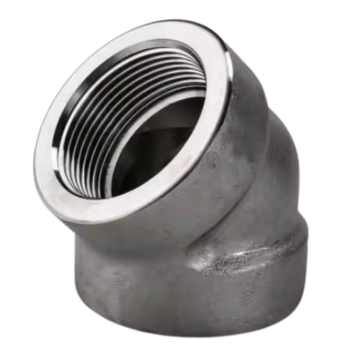
Forged Fittings
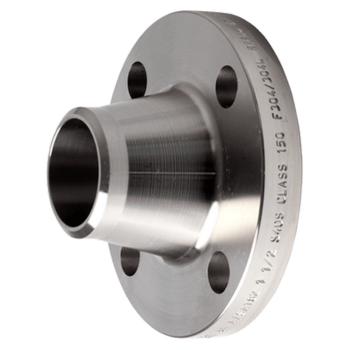
Flanges
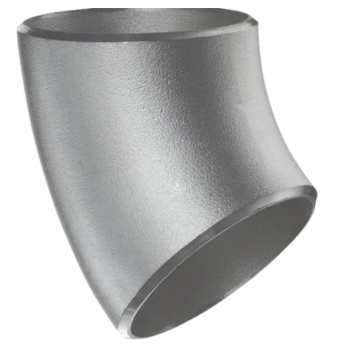
Buttweld Fittings
